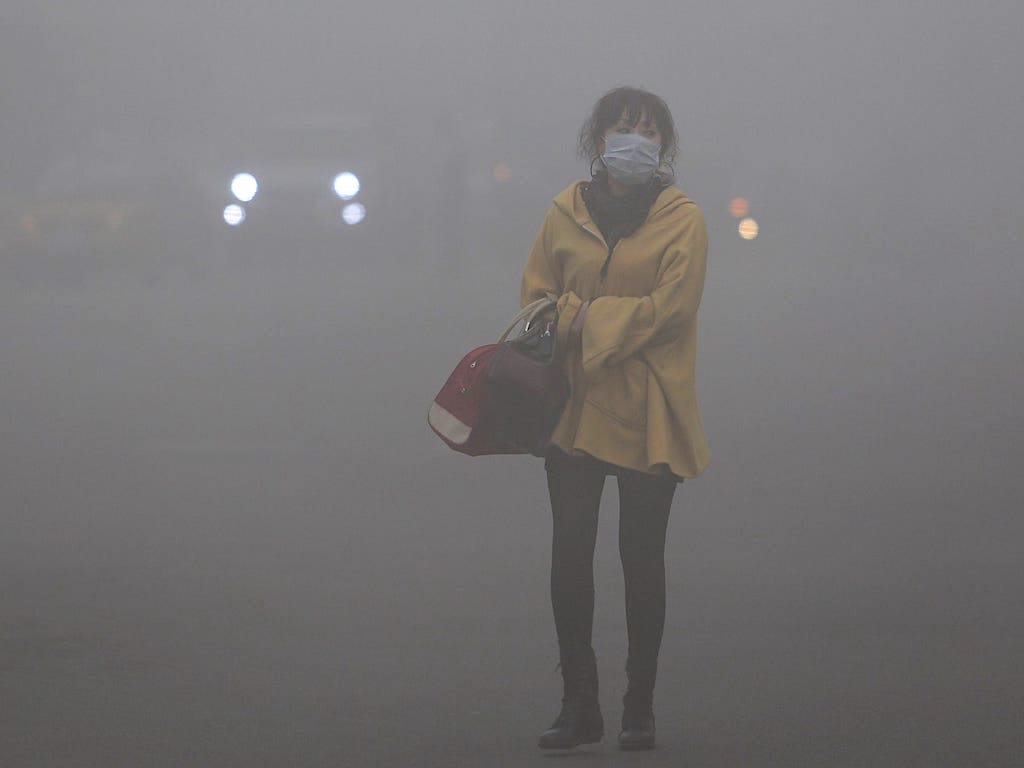According to the new 2019 World Air Quality Report released by IQAir Group and Greenpeace, nearly 90% of the world’s 200 most polluted cities are located in China and India. The results were calculated based on data measuring the microscopic type of air pollution – PM2.5 pollution – particulate matter that is small enough to enter the bloodstream and has been associated with chronic respiratory issues, asthma, lung cancer and heart disease.
In the new annual world air quality report, jointly published by Greenpeace and IQAir Group, almost 90% of the 200 cities examined that are suffering from the world’s highest levels of PM2.5 pollution are in China and India. Among the world’s megacities – cities with 10 million people or more – New Delhi ranked as the city with the highest levels of PM2.5, followed by Lahore, Dhaka, Kolkata, Linyi, Tianjin, and Jakarta.
Closely trailing the list was Wuhan, which is the ground-zero of the current Covid-19 epidemic, alongside its neighbouring cities of Chengdu and Beijing. When population is taken into account, Bangladesh emerged as the country with the worst overall levels of PM2.5 pollution, followed by Pakistan, Mongolia, Afghanistan and India. The results of the report were based on data collected from 5,000 cities globally.
PM2.5 refers to particulate matter the size of 2.5 microns or less in diameter, and is considered the most dangerous and toxic kind of air pollution. This type of air pollution can originate from natural sources such as sandstorms and volcanic eruptions, but is primarily released into the atmosphere via human activities such as the burning of fossil fuels, motor vehicles, airplanes, wildfires and agricultural burning. These microscopic particles are tiny enough to enter the human bloodstream through the respiratory system and is responsible for almost 7 million premature deaths annually, according to the World Health Organisation (WHO).
“Air pollution is the world’s leading environmental health threat. 90% of the global population is breathing unsafe air,” said IQAir Group CEO Frank Hammes.
The new report highlights the challenge of tackling air pollution that many Asian countries currently face amid rapid urbanisation and development. While China’s average PM2.5 concentration has declined 20% since 2018, it still accounts for 117 of the 200 most air polluted cities in the world. In China alone, 1 million premature deaths annually are linked to air pollution. Last year, a landmark study in China found that maternal exposure to air pollution had also been associated with an increased risk of fetus disease and missed or “silent” miscarriages in the country.
Elsewhere, a study conducted by a group of scientists in Canada found that an increase in pollution exposure equivalent to the difference between a quiet city street and a busy road could lead to a heightened burden of brain cancer by more than 10%. These results marked the first findings that have established an association between nano-particles such as PM2.5 and the rare and deadly form of cancer.
Greenpeace has also recently released a report on air pollution and fossil fuel burning this month. The report, which was published jointly with the Centre for Research on Energy and Clean Air (CREA), found that of the total 7 million premature annual deaths linked to air pollution, 4.5 million of deaths were directly attributable to pollution from the fossil fuel industry. It additionally found that air pollution generated by the coal, oil and gas industry is responsible for US$8 billion in losses every day, which totals to US$2.9 trillion per year.
The wave of new scientific findings on the causes and consequences of air pollution renews the call for governments – especially China and India among many Asian countries – to urgently crackdown on the air pollution crisis. While some grassroots and academic sectors have mobilised to offer solutions, such as Hong Kong’s PRAISE-HK phone app that helps users avoid heavily polluted areas in real time, structural efforts from authorities are needed. If left unresolved, it is clear that the planet, human health and the global economy are at stake.
Lead image courtesy of AFP / Getty Images.



